An experimental prototype of the IS-1 tank, formerly called KV-13, was sent to factory trials on March 9th, 1943. This was a fully fledged heavy tank, a little lighter than the KV-1S, but much more mobile and protected. However, during the government trials in the spring of 1943, it became clear that it needs a number of improvements, some of them quite serious. The German Tiger tank was the last nail in the coffin of the IS-1. It turned out that an 85 mm gun was necessary to combat this tank, which would not fit into the turret of the experimental Soviet vehicle. This was the start of the story of the Object 237, the last step towards the creation of the heavy IS tank.
Deep modernization
The need to equip the tank with an 85 mm gun with the ballistics of the 52-K AA gun was one of the main reasons for major changes to the IS-1, but not the only one. It was clear that the design was far from perfect after the first stage of government trials. An impressive list of required changes was gathered by April of 1943. The T-34's chassis concept, with five road wheels per side, was not a good choice for a heavy tank. The pressure on each road wheel was high, which impacted the tank's mobility on soft terrain. The commission requested that the number of wheels per side should be increased to 6.
The location of the air intakes on the engine deck was also poor. During motion, they became covered in mud, and installation of fenders didn't help. The design of the driver's observation device also earned some complaints.
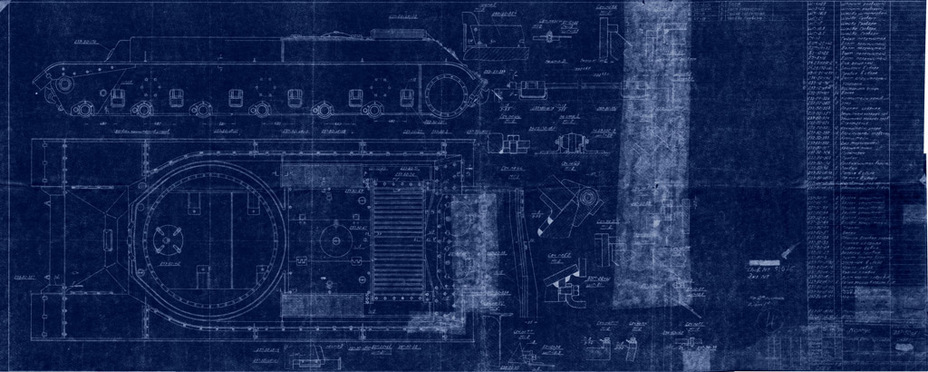
The situation with the gun was merely the last nail in the IS-1's coffin. ChKZ and factory #200 were likely displeased with the situation, as preparations for mass production according to State Committee of Defense (GKO) decree #2943 were already underway. Work on assembly of the pilot batch of 10 tanks stopped. Factory #9's design bureau, who was working on the 85 mm tank gun alongside Chelyabinsk factories, made its own conclusions. Their verdict, passed on by the Chief of the Red Army Main Tank and Armoured Vehicle Directorate (GBTU) Colonel General Ya.N. Fedorenko left the tank with no hope of survival.
«According to GOKO decree #3288 issued on May 5th, 1943, two experimental IS tanks must have 85 mm guns with the ballistics of an AA gun.
Design work to install the new gun in the turret of an IS tank shows that the crew conditions would be very cramped.
The tank commander, located behind the gunner, will get in the way of aiming the gun and the loader will have difficulty loading due to the length of the cartridge (930 mm).
Designers of the Kirov factory headed by comrade Kotin decided to expand the turret ring to the diameter of 1800 mm.
The widening of the turret ring required widening the turret platform, increasing the length of the hull by 420 mm, and adding one road wheel per side.
These changes of the IS-1 and IS-2 tanks increase the weight of the tank and reduce its power to weight ratio and speed.
I ask the People's Commissar of Tank Production (comrade Zaltsman) to present updated tactical-technical characteristics for an IS tank with an 85 mm gun and an 1800 mm turret ring to the GOKO for approval by June 10th, 1943.
Like the 85 mm gun developed by the Central Artillery Design Bureau (TsAKB), the D-5 was the result of work that started back in 1942. The first tactical-technical requirements for the future D-5 were issued on March 26th, 1943. This was a different gun from the final product with a lower muzzle velocity. Work on the future D-5 began in April of 1943. This gun was supposed to be installed in the stock turrets of the KV-1S and IS tanks. The requirements changed after shooting at a Tiger tank and the idea died. The full ballistics of the 52-K gun required a longer recoil length: 430 mm instead of the planned 350-370 mm.
There was also a problem with the loading. The 52-K round was longer than the F-34 round. In an attached memo designers of the D-5 A.N. Bulashev and N.G. Kostrulin proposed widening the turret ring from 1585 to 1700 mm. This would allow for storage of more ammunition and make the crew's workspaces better. This also meant that the turret and chassis of the tank would have to be changed. To be fair, the competition from the TsAKB was also making their gun for a non-stock turret. The 85 mm S-31 gun would be compatible with the turret ring of the KV-1S and IS, but the turret would have to be altered. Weighing the pros and cons, designers in Chelyabinsk decided to go with the more involved alteration plan, especially since the chassis would have to be changed after trials anyway.
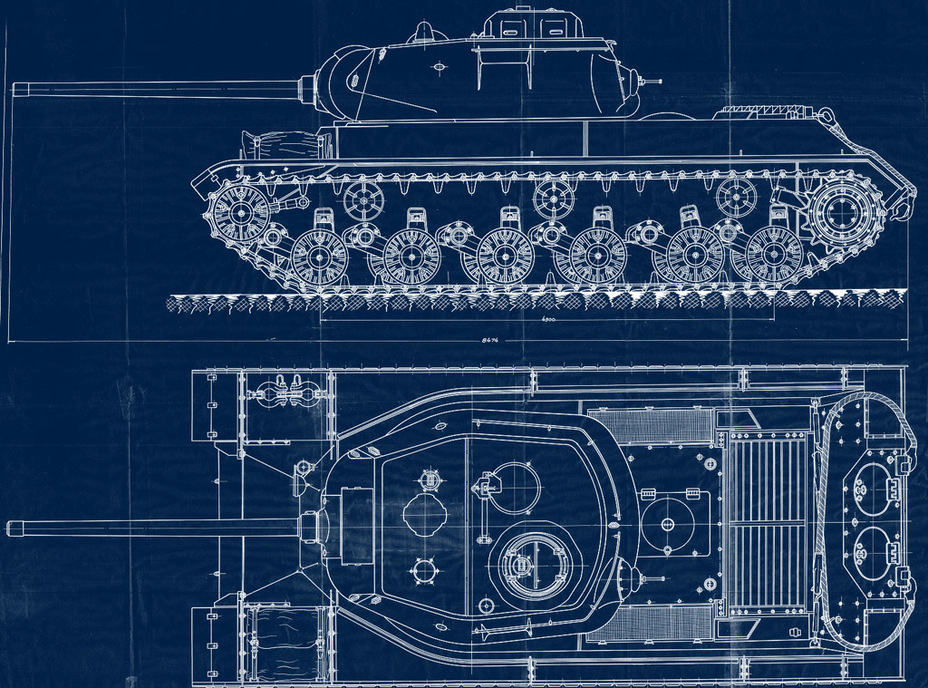
The resulting tank was named IS and had a blueprints index 237. The work on it began on May 1943. N.F. Shashmurin was still the lead engineer on the project. The first hull was ready by mid-May. THe overall layout did not change, but it was clear that the designers took the design of spring tests into consideration. The hull was wider and no longer tapered at the rear. The length of the hull grew to 6454 mm due to the larger turret ring and other changes.
The front also changed somewhat. Since the idea of sideways facing observation devices showed itself poorly, they were replaced with two MK-IV periscopes in the driver's compartment. This resulted in better observation for the driver.
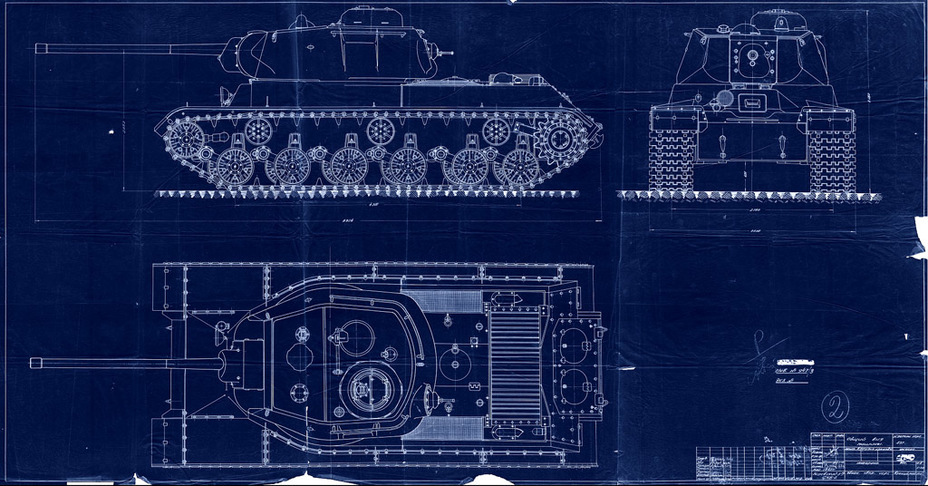
The increased length of the hull and weight led to significant changes to the running gear. As required, the number of road wheels grew to 6 per side. There were other complaints about the running gear and most of the elements had to be changed. The design was reinforced, but the diameter of the wheels stayed the same. The suspension arms, idlers, and drive sprockets changed.
As for the engine group, the changes were negligible. The design used on the IS-1 was already very good. The changes that were introduced mostly touched small components.
Calculations made in May of 1943 showed that the IS tank would increase in weight to 43-44 tons and surpass the KV-1S in weight. The top speed was estimated at 35-37 kph (later increased to 42 kph). The military was fine with this, as the mobility of the KV-1S was enough for a heavy tank.

The general concept of the KV-1S turret with a gun mount attached from the front remained the same. Even all of these improvements did not fully get rid of the complaints about the comfort of the turret crew. Increasing the turret ring diameter was not the only measure. The commander's workspace was still cramped, and even moving the cupola to the left into a small bulge didn't do much to fix it. Because of this, the bulge was noticeably enlarged. A MK-IV observation device for the loader also appeared on the turret roof.
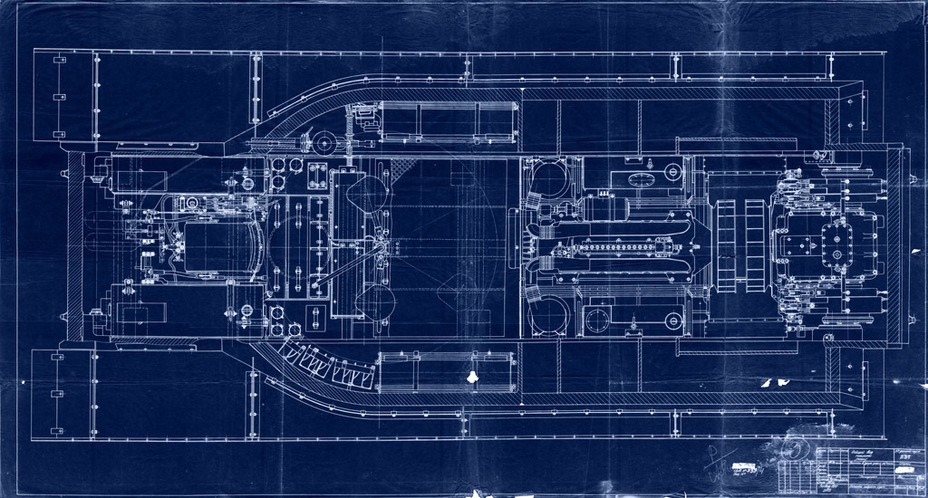
The changes made the turret very roomy and the 85 mm gun with with no issues. There were already two such guns by late May. In addition to factory #9's D-7 (later D-5T-85) the TsAKB prepared its own S-31 gun. The concept of a turret with a front mounted gun came in very handy, all the assemblers had to do was take off one gun mount and install the other. There were no differences in the hull configuration or ammunition placement.
Waiting for a gun
According to GOKO decree #3289 issued on May 5th, 1943, the experimental prototypes of IS tanks with 85 mm guns had to be ready for state trials by July 1st, 1943. Of course, this was still referring to the IS-1, but the deadline wasn't moved when it became apparent that the tank had to be redesigned. As a backup plan, a project to improve the armament of the KV-1S was launched. This was the correct move. The KV-1S was already in production and changing it to accept a new gun would have taken less time than putting the IS into production.
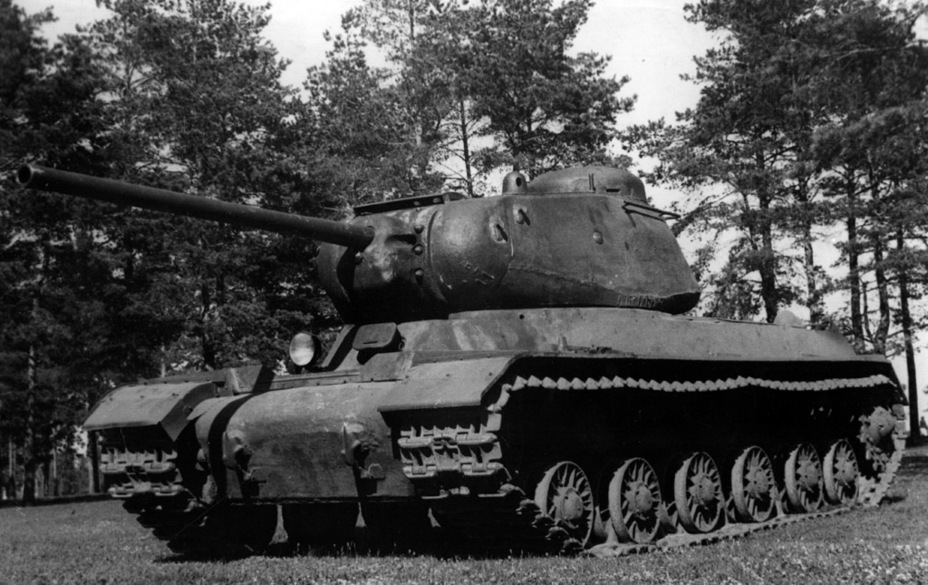
The IS was referred to as IS-3 starting in late May of 1943, as the IS-1 and IS-2 were already used. Most of the effort to build this tank was put in by factory #100. According to their report for the first third of June, preparations to produce the tank began on May 20th. The first blueprints were sent into production that day.
The limiting factor was components that were yet to be developed. Some sources claim that the turret was ready by May 1st, but that statement is doubtful. No IS-3 hulls or turrets arrived from factory #200 to factory #100 by mid-June. This couldn't happen in the first place, as the turret and hull blueprints were not finished by then. Factory #100 had time to produce a set of parts for one vehicle and begin assembly of drive sprockets and running gear. The planetary turning mechanism, brakes, control rods, idler, and a number of other parts were ready.
ChKZ, which was responsible for a portion of the components, was also delaying assembly.
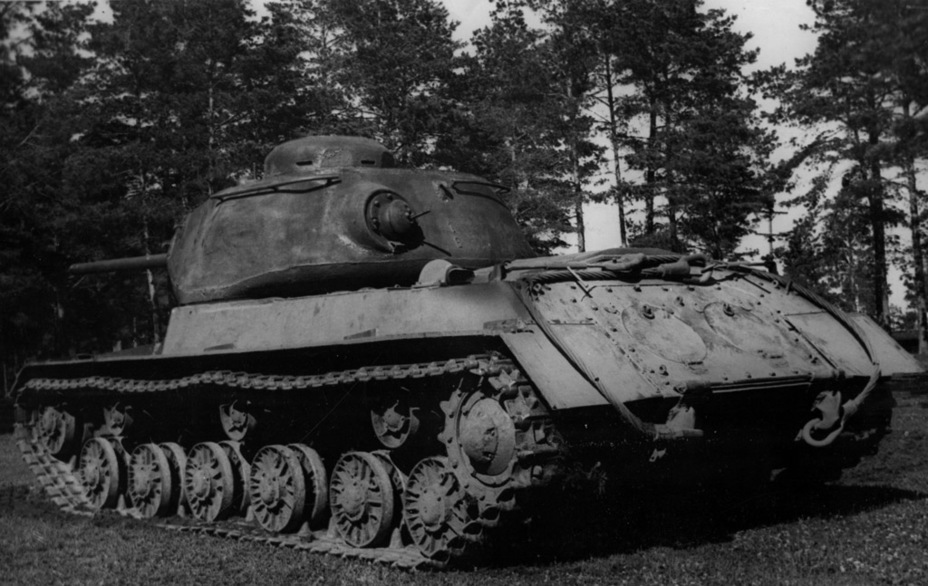
The gun was also a limiting factory. Even though factory #9's gun was higher in priority, TsAKB finished their task first. For this reason there is more surviving documentation about the S-31. Nevertheless, the gun had not yet arrived by factory #100. In correspondence the gun was called F-85, that was its index at factory #92 where it was being produced.
The situation with the D-5T-85 was even worse. While factory #92 managed to produce and deliver four S-31 guns by the end of June, factory #9 delivered just one D-5T-85. However, by then factory management already discovered serious drawbacks of the S-31. For instance, its recoil length was 540 mm, while the D-5T-85's was just 300 mm.
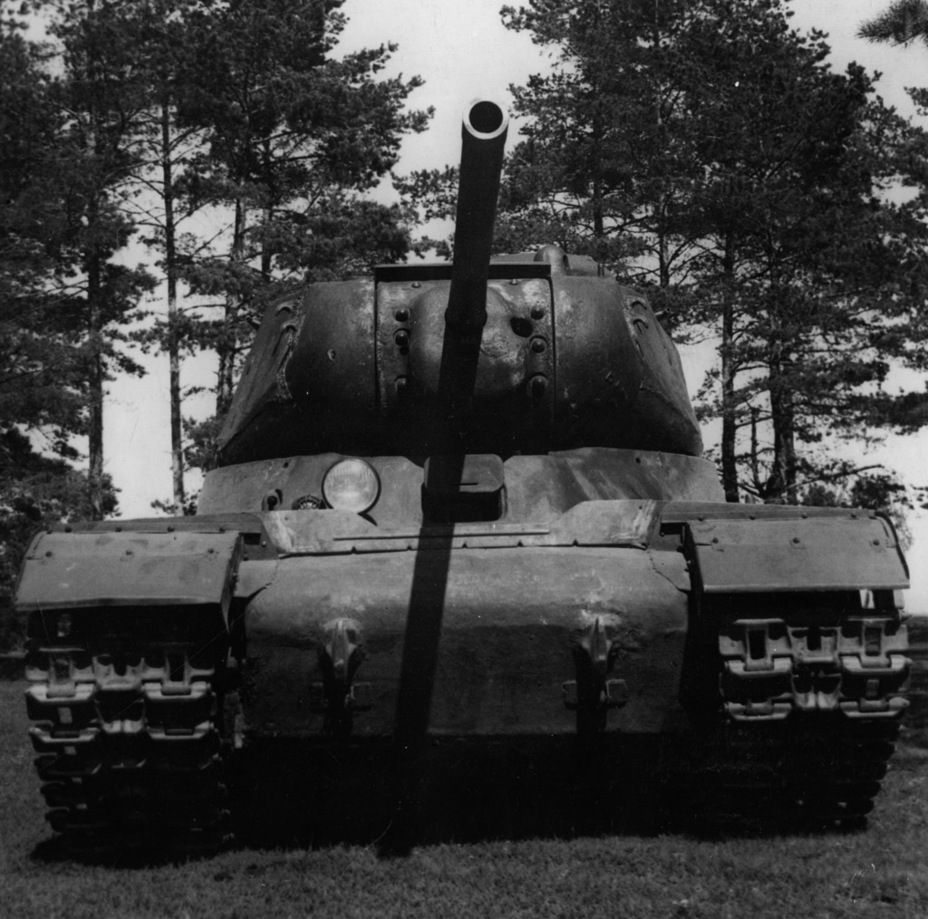
Another feature of the S-31 disliked by factory #100 engineers was the bulky cradle. That was the cost of using tried and tested components of the F-34. The resulting mantlet was similar to the one used on the IS-1. This was not the most robust solution and it also made the gun mount more complicated.
The D-5T-85 was a different story. This development of the U-11 gun had a very compact cradle. The gun mantlet was also simpler and smaller.

This delay meant that assembly of the first IS-3 only began at factory #100 on June 21st. Factory #200 promised to deliver the second hull by July 1st. Assembly of the third hull also began at factory #200. The turret and armament were once again the limiting factor. By June 30th factory #100 finished the chassis, but ChKZ had not yet produced the turret. As a result, the first trial run of this tank, dubbed Object 237, was «headless». The tank drove for 24 km until defects of the main clutch adjustment mechanism and turning mechanisms were discovered.
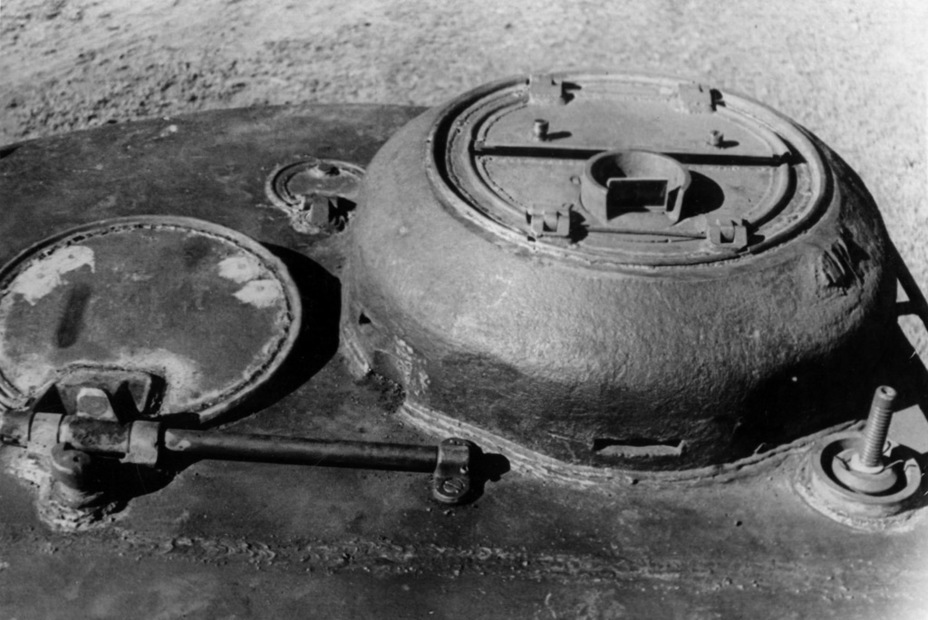
A turret with the S-31 gun was only installed on July 8th. Factory trials began the next day. The tank drove for 1543 km. The average movement speed was 22 kph, the average total speed was 19.4 kph. The tank spend 390 L of fuel per 100 km. Some defects in the running gear and transmission were discovered during the trials.
The testers noted that the tank was much better than its predecessor. The increase of the number of road wheels to six per side was a definite plus. The cooling system also worked well, the tank could run in 8th gear with no issues. The testers didn't like the cramped driver's compartment, the low position of the observation device and control levers, and the high effort on the clutch pedal.
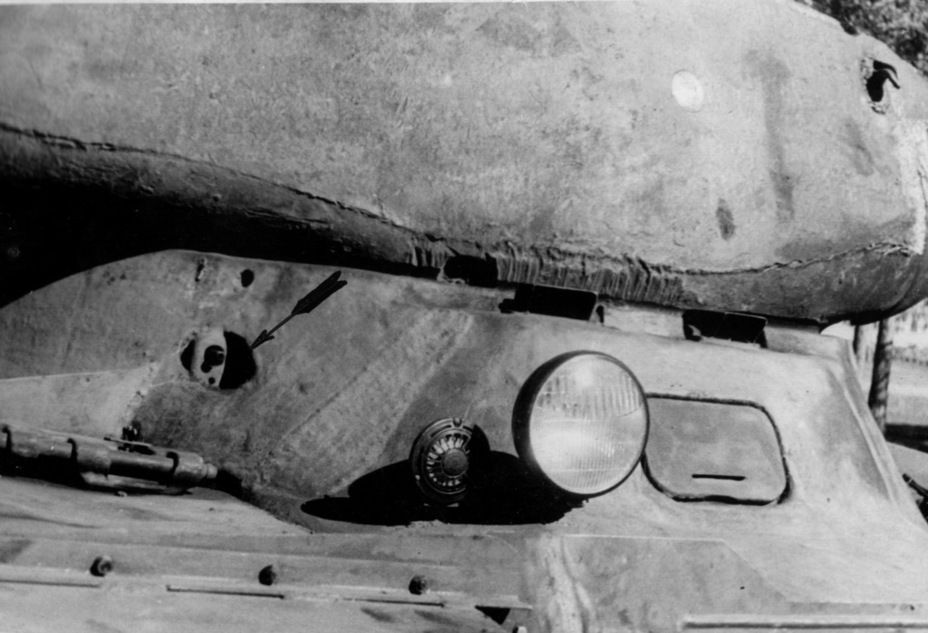
The second prototype was already being assembled, but a number of components were still due from the Kirov factory, including the turret. Assembly of the chassis was finished by June 20th, but the turret had not yet arrived. Taking all this into account, the trials program of tanks armed with an 85 mm gun was very optimistic. Even putting the new guns into the KV-1S was not that easy. Object 239, the second experimental KV-1S with serial number 15002, still did not have a turret and gun by July 10th. There was still only one D-5T-85 gun available, and it was destined for the Object 239. As a result, the second Object 237 also had an S-31 gun.
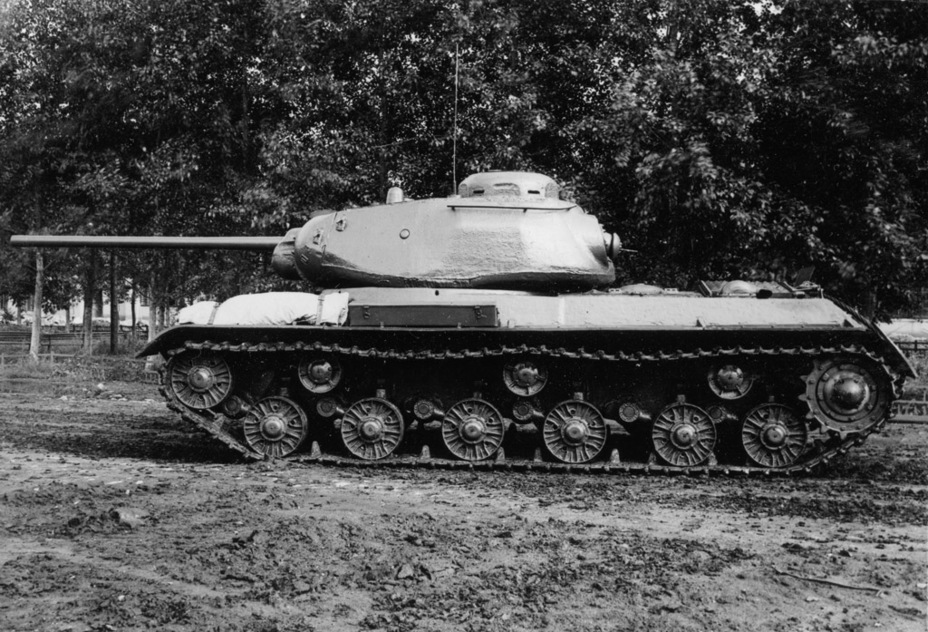
While Kirov factory continued to work on the turret and install armament, IS tank #1 went through driving trials. The tank was lighter than expected. The technical requirements specified a weight of 45,342 kg, in reality it was 43,227 kg. The ammunition capacity was also lower: only 50 rounds were carried instead of 65-70.
The IS turned out to weigh the same as the KV-1S. Weighing showed that the production tank weighed 43,348 kg, but the Object 239 was heavier: 45,282 kg. The armour of the IS tank also met requirements, aside from the rear (60 mm vs 75 mm) and roof (20 mm vs 20-35 mm).
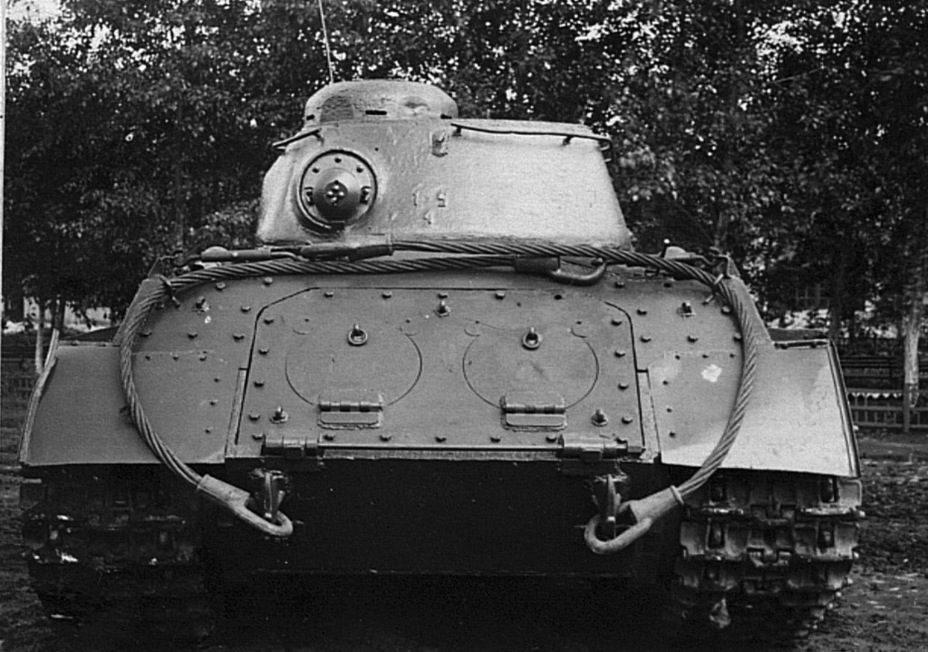
The tank drove for 441 km over the course of factory trials that took place from July 11th to July 13th. The tank covered 630 km in total by then. To test its ability to cover long distances the tank drove for 141 km in one day on July 11th, 25 of which were on a cobblestone highway, 91 on a dirt road, and 25 off-road. The average movement speed recorded was 23.2 kph, but the total average speed was 12.45 kph. The fuel consumption was 305 L per 100 km.
The tank drove for 300 km on July 13th: 75 km on a cobblestone highway, 200 on a dirt road, 25 off-road. The fuel expenditure increased to 343 L per 100 km, but the average speed also increased (movement speed to 25.5 kph, total to 19.2 kph). The water in the cooling system didn't boil at an external air temperature of 28 degrees. The IS tank's main issues were resolved.
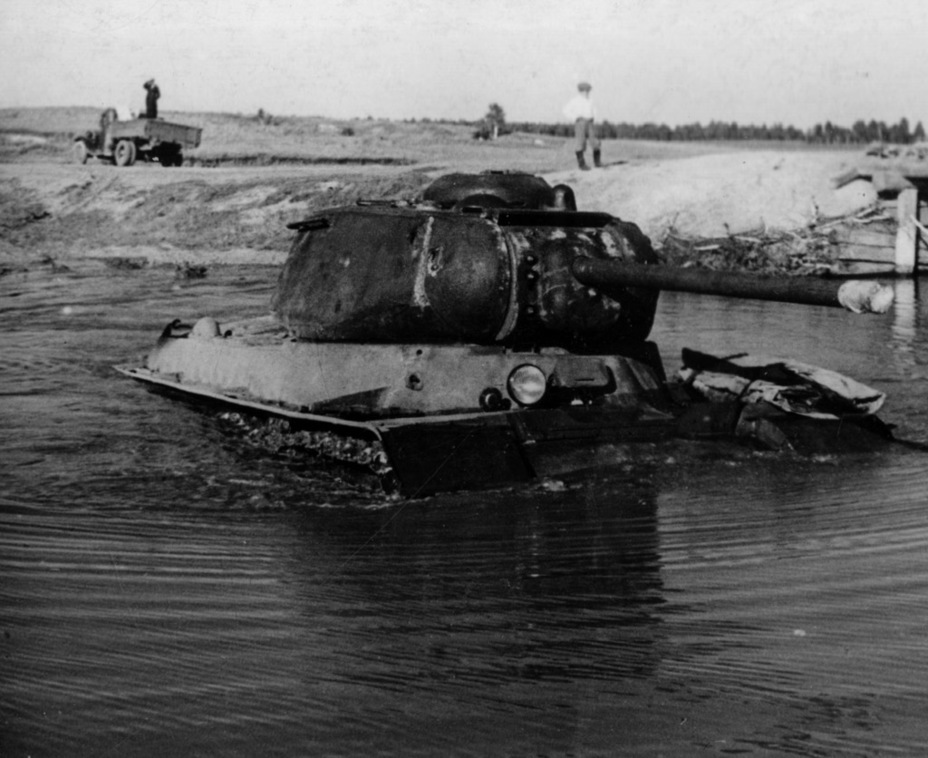
The Multicyclone filter was tested alongside the tank. It was effective, but there were assembly issues. There were also small issues with the engine due to factory defects. The IS had a different engine than the IS-1 or KV-1S. It was designated V2-IS and put out 520 hp at 2000 RPM.
Despite some issues, the IS was a more reliable tank than its predecessors. A list of required correction was made, numbering just 8 items. Most of the complaints were about the driving.
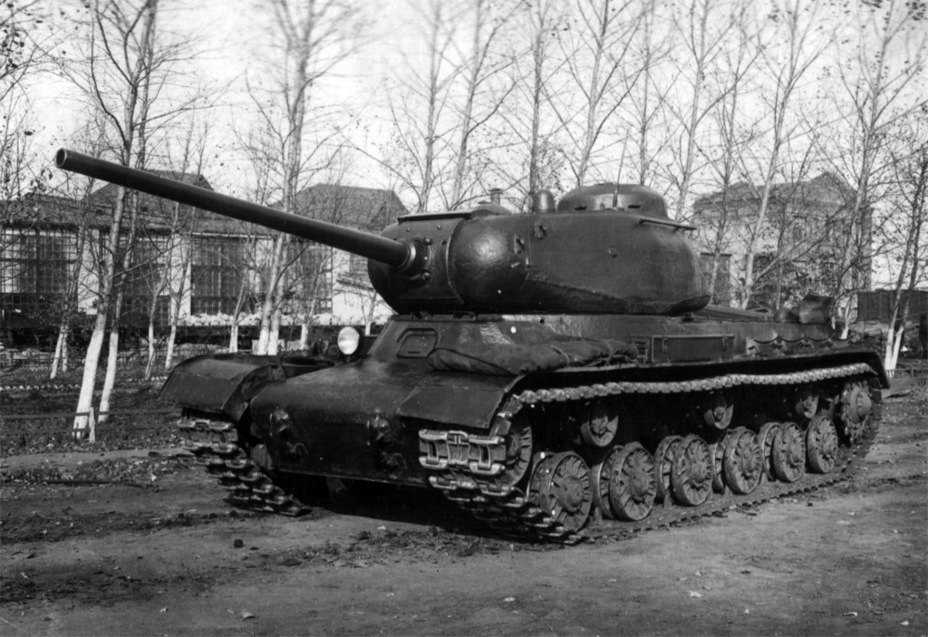
The second experimental IS was tested starting on July 22nd, 1943. The first 29 km of its trials were covered without a turret. In total the tank drove for 355 km before July 30th, of those 215 were on a highway and 140 on a dirt road. The tank's off road mobility was also tested. It forded a river and climbed a 35 degree slope. The average movement speed was 24.6 kph and average total speed was 19.1 kph, so about the same as the first prototype.
With the same weather the temperature of the water was actually lower than its predecessor's (90 vs 98 degrees) and so was the fuel expenditure: 300 L per 100 km. The air cleaner also worked more reliably, and the tank was more reliable in general. There were defects, of course, but none were critical.
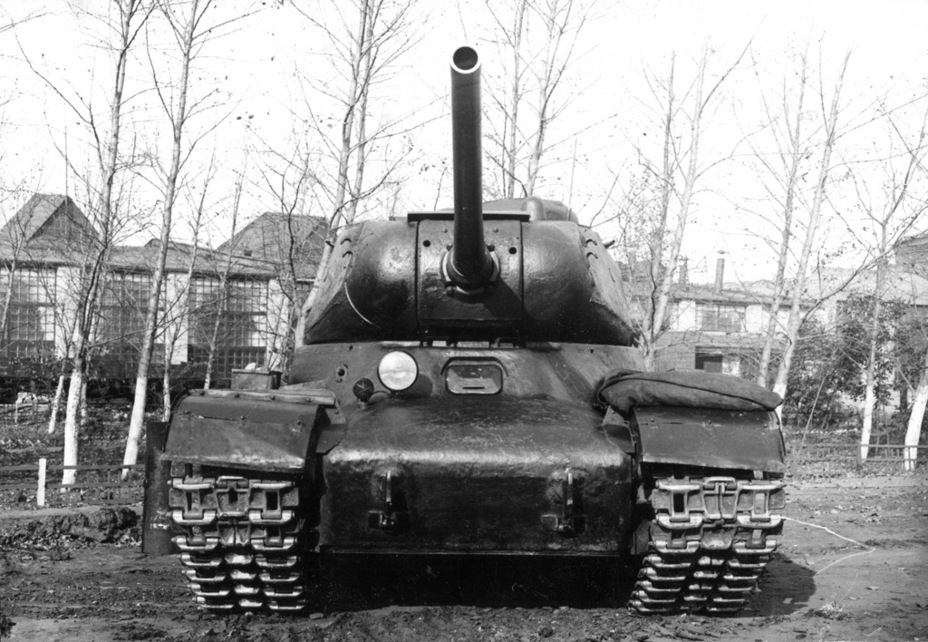
The last trials the second tank was put through were gunnery trials at the factory range. Soon after this the first prototype was converted. The tank received the long awaited D-5T 85 mm gun in early August. Now comparative trials of the armament could be performed.
A worthy replacement for the KV-1 finally came out of Chelyabinsk 1.5 years after the start of the KV-13 program.
3:0 win for factory #9
The delay with installation of armament and assembly of the tanks resulted in missing deadlines set by GKO decree #3289 issued on May 5th, 1943. There was enough to do in Chelyabinsk without this work. ChKZ and factory #200 were overloaded, simultaneously producing the T-34, KV-1S, and SU-152. One should not be surprised that experimental work was late. The government understood this too.
The trials program had to be changed following this delay. A new one was prepared on July 8th. It required 961 shots from the S-31 in the second prototype and 892 shots from the D-5T-85 in the first prototype. Driving trials were also included.
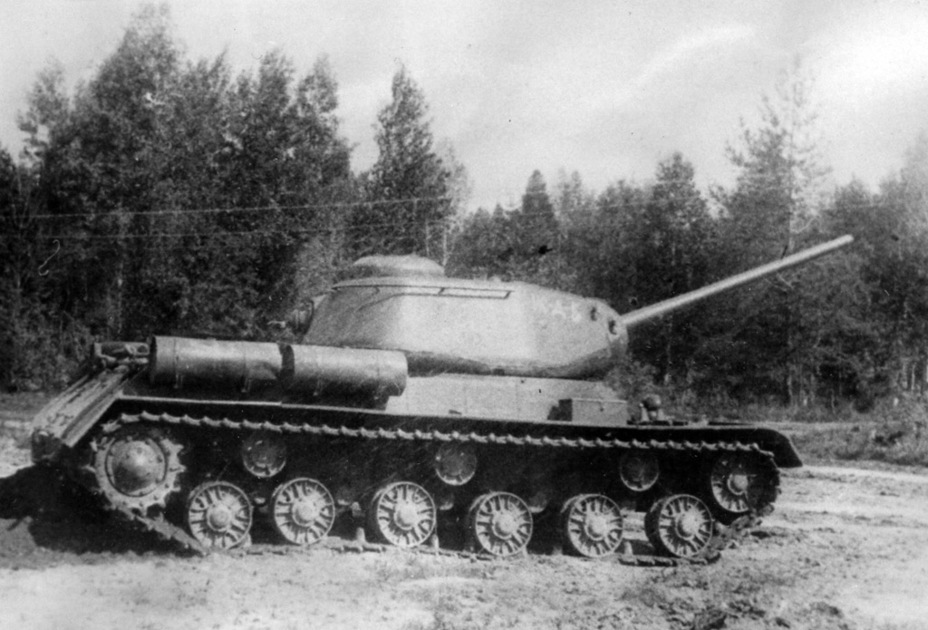
These trials would help in selecting the armament of the tank that would be built as a temporary measure until IS production. However, everything was decided before they even began. Stalin signed GKO decree #3891ss «On production of KV tanks with the 85 mm gun (KV-85)" on August 8th, 1943. It chose the Object 239, which used the same turret as the IS tank that was armed with the D-5T-85 gun.
This was caused by comparative trials of various SU-85 prototypes and the SU-122-III. The D-5S-85 was the clear victor. Factory #9 won its first victory over the TsAKB. It was not surprising that the same gun was chosen for the KV-85. The gunsmiths from Sverdlovsk won before the trials even started.
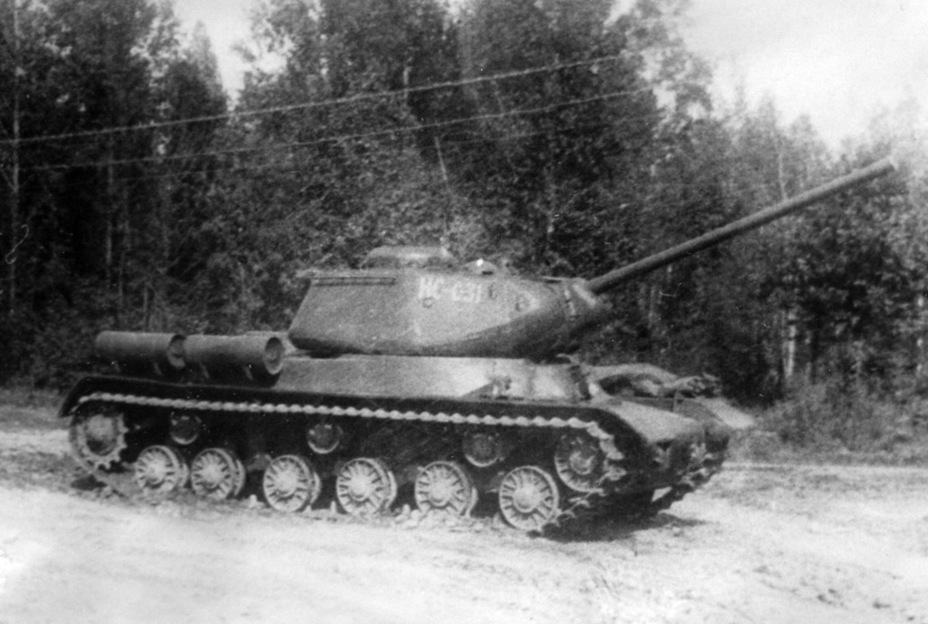
Trials were held between August 21st and 24th at the Gorokhovets proving grounds. Both tanks were equipped with external fuel tanks. The S-31 fell behind its competitor at the very beginning. The recoil length was 480-570 mm, more than the norm. The gun was also out of balance and required counterweights. The D-5T-85 had a shorter recoil, 240-300 mm. The access to the recoil mechanism was easier, and the brass catcher was smaller due to the shorter recoil. The gun mantlet was also 270 kg lighter. This gun didn't need a counterweight.
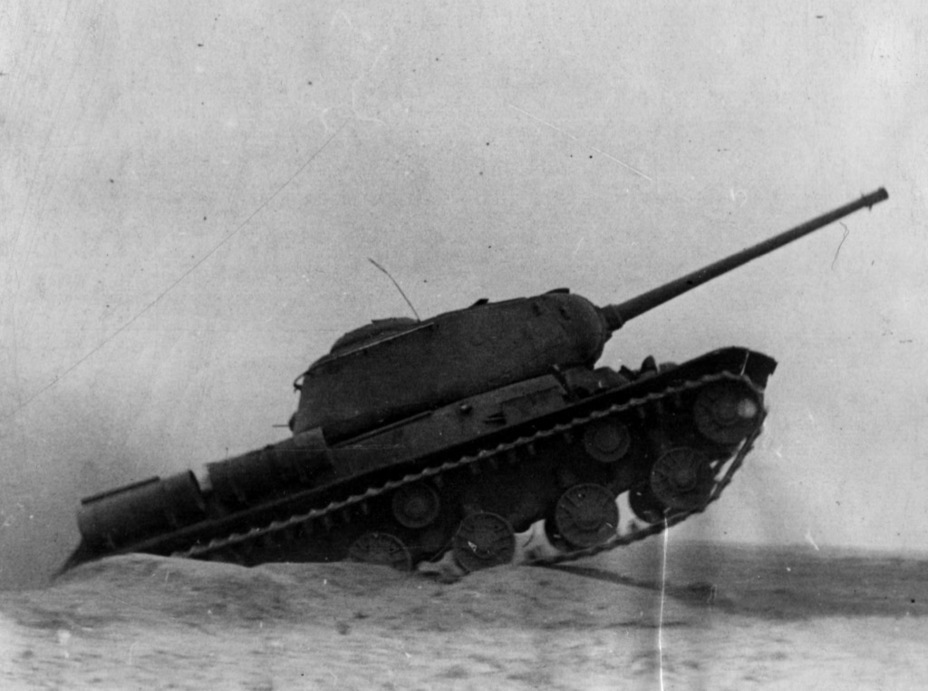
The real trials were shorter than expected. The S-31 made 302 shots (160 supercharged) and the D-5T-85 made 329 (160 supercharged). It turned out that the D-5 had superior precision. The S-31 had a higher jump (the angle between the bore axis before firing and the bore axis as the shell exits the barrel). The D-5T's rate of fire was 8-13 RPM, the S-31's was 7-15 RPM. The D-5T was the leader.
Formal trials just served to confirm that the choice of this gun for the KV-85 was correct. The results of the trials finally allowed the selection of a new tank. On September 4th, 1943, Stalin signed GKO decree #4043 «On production of the IS tank».
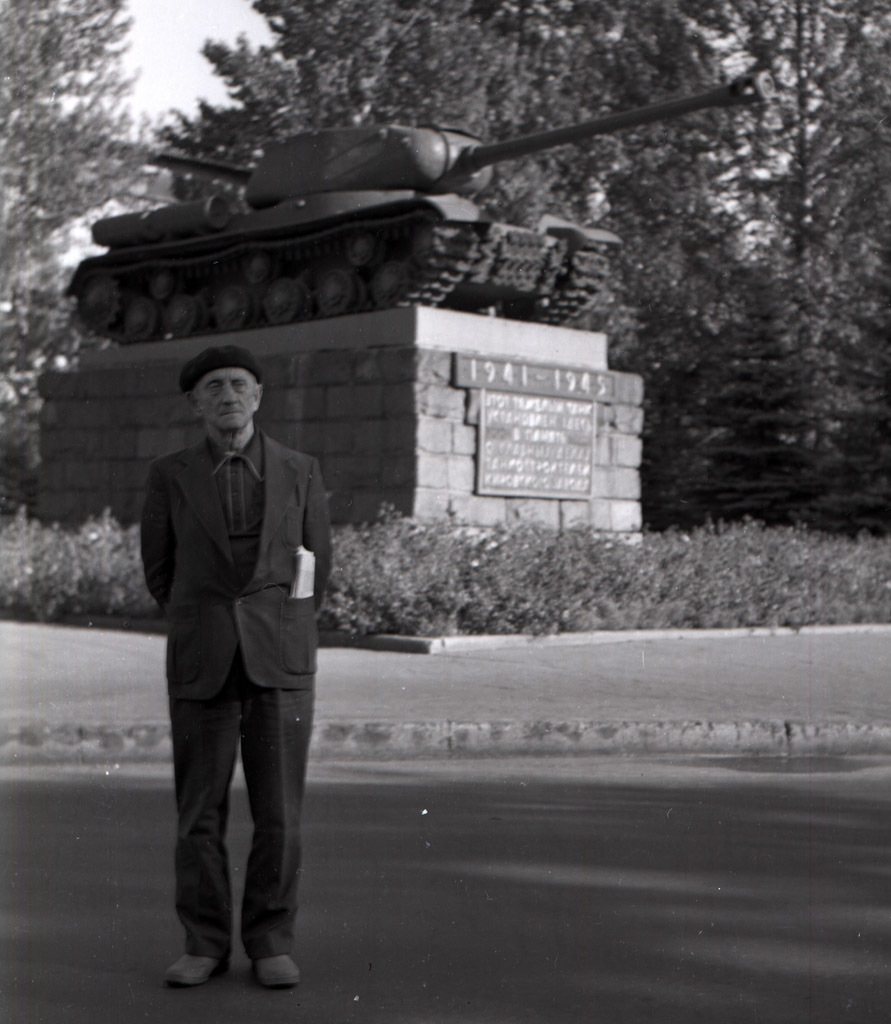
Trials of the two IS prototypes didn't end there. The first tank travelled for 1478 km by October 5th, the second 1151 km. The second IS tank later received a 122 mm gun. As for the first tank, it served as a test lab. Parts and assemblies that would later be used on the IS-85 tank were tested on it. By December 15th it had driven for 4243 km. Tracks made from 27 SGT and LVT #92 steel were tested on it as well as new bearings and a number of other components.
Later the two prototypes were changed multiple times. One of them is now on display at the Kirov factory in St. Petersburg. The characteristic exhaust pipe covers and rear plate tell us that this is an experimental tank.
Translated by Peter Samsonov. Read more interesting tank articles on his blog Tank Archives.
Sources:
- Russian State Archive of Economics;
- Central Archives of the Russian Ministry of Defence;
- Russian State Archive of Socio-Political History;
- Archive of Gennady Malyshev;
- Archive of Sergei Netrebenko;
- Alexander Smirnov's archive.






